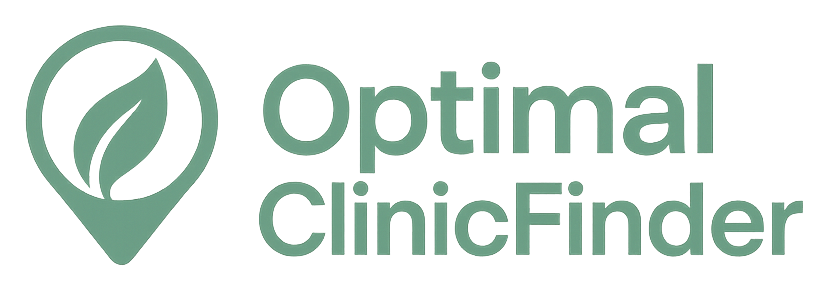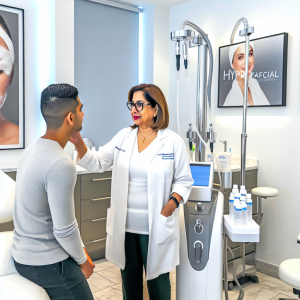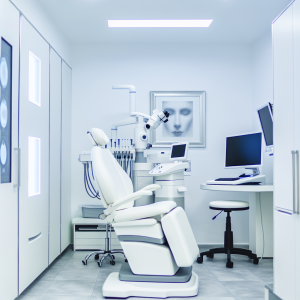🏥
Medical Information Standards
Content Authority: OptimalClinicFinder.com is a comprehensive medical directory platform connecting patients with qualified CoolSculpting providers. Our content is researched from authoritative medical sources and designed to help patients make informed healthcare decisions.
How CoolSculpting Works: Clinical Mechanism and Cryolipolysis Science
CoolSculpting operates on the scientific principle of cryolipolysis, a process that selectively targets and eliminates fat cells through controlled cooling. The technology exploits the differential thermal sensitivity between fat cells and surrounding tissues, with adipocytes being more susceptible to cold-induced cell death than skin, muscle, or nerve tissue. During treatment, specialized applicators deliver precise cooling to treatment areas, lowering tissue temperature to approximately -10°C to -15°C.
The cryolipolysis process triggers apoptosis (programmed cell death) in fat cells without damaging surrounding structures. This selective targeting occurs because fat cells contain higher concentrations of saturated fatty acids that solidify at higher temperatures than the unsaturated fats in other tissues. Over the following weeks to months, the body’s natural metabolic processes gradually eliminate the destroyed fat cells through the lymphatic system, resulting in permanent fat reduction in treated areas.
💡
Did You Know?
Clinical studies show that CoolSculpting patients achieve excellent results when combined with professional-grade aftercare products.
Clinical Research and Evidence Base
The clinical development of CoolSculpting involved multiple peer-reviewed studies published in leading medical journals including Lasers in Surgery and Medicine, Aesthetic Surgery Journal, and Clinical, Cosmetic and Investigational Dermatology. These studies enrolled thousands of participants across diverse demographics and followed patients for up to 12 months post-treatment. Primary endpoint data consistently demonstrated 15-25% fat reduction in treated areas compared to untreated control areas.
Subgroup analyses revealed that CoolSculpting effectiveness extends across different body areas and patient populations, including those with varying BMI levels and skin types. The technology showed particular efficacy for addressing localized fat deposits resistant to diet and exercise, such as abdominal fat, flanks, thighs, and submental areas. Long-term follow-up studies have confirmed durability of fat reduction and continued safety over extended observation periods, with no evidence of fat regrowth in treated areas.
Treatment Protocols and Clinical Management
Successful CoolSculpting treatment requires careful patient selection and individualized treatment planning. The initial consultation process includes comprehensive assessment of treatment goals, medical history review, physical examination of target areas, and realistic expectation setting. Healthcare providers must evaluate skin laxity, fat distribution patterns, and overall candidacy for non-invasive body contouring.
The standard treatment protocol involves customized applicator selection based on treatment area anatomy and desired outcomes. Treatment cycles typically last 35-75 minutes depending on the specific applicator used, with newer DualSculpting techniques allowing simultaneous treatment of multiple areas. Most patients require 1-3 treatment sessions per area to achieve optimal results, with sessions spaced 1-3 months apart. Post-treatment care includes brief massage to enhance fat cell disruption and patient education about expected sensations and timeline for results.
💡
Quick Tip
CoolSculpting works best when combined with healthy lifestyle choices for optimal results.
Safety Profile and Risk Management
The safety profile of CoolSculpting has been extensively characterized through clinical trials and post-marketing surveillance involving hundreds of thousands of treatments. The most common adverse events include temporary redness, swelling, bruising, and numbness in treated areas, which typically resolve within days to weeks. Patients may also experience temporary sensations of tingling, stinging, or cramping during and immediately after treatment.
Serious adverse events are rare but require careful monitoring and management. Paradoxical adipose hyperplasia (PAH), occurring in approximately 0.0051% of patients, represents the most significant rare complication. This condition involves enlargement rather than reduction of fat in treated areas and may require surgical intervention. Risk factors for PAH include male gender and Hispanic ethnicity, highlighting the importance of thorough patient counseling and informed consent. Healthcare providers should educate patients about all potential risks and establish clear protocols for follow-up evaluation.
Cost Analysis and Treatment Investment
The cost of CoolSculpting treatment varies significantly based on geographic location, provider experience, treatment area size, and number of sessions required. Without insurance coverage, treatments typically range from $600-$4,000 per session, with most patients investing $2,000-$8,000 for complete treatment plans. Multiple treatment areas and sessions can increase total investment, but many providers offer package pricing to reduce per-session costs.
Insurance coverage for CoolSculpting is generally not available since it’s considered a cosmetic procedure rather than medical necessity. However, many providers offer financing options, payment plans, and seasonal promotions to make treatment more accessible. The cost-effectiveness of CoolSculpting should be evaluated against surgical alternatives like liposuction, considering factors such as anesthesia costs, facility fees, recovery time, and potential complications.
Coolsculpting Near Me: Provider Selection and Treatment Access
Choosing an experienced CoolSculpting provider is crucial for optimal treatment outcomes and safety. Patients should seek providers with specific certification in CoolSculpting technology, extensive experience with body contouring procedures, and a comprehensive approach to patient care. Board certification in relevant specialties such as dermatology, plastic surgery, or aesthetic medicine provides additional credibility and expertise.
⚠️
Safety First
Always consult a qualified medical professional before starting CoolSculpting. Results vary by individual.
✓
Why Choose CoolSculpting?
●
Clinically proven
●
FDA approved
●
Minimal downtime
●
Long-lasting
Access to quality CoolSculpting treatment has expanded significantly as more medical practices adopt the technology. Many dermatology clinics, plastic surgery centers, and medical spas now offer CoolSculpting services, though treatment quality and provider experience can vary significantly. Patients should research provider credentials, review before-and-after photos, read patient testimonials, and schedule consultations to assess facility quality and provider expertise before committing to treatment.
Treatment Areas and Customization Options
CoolSculpting technology offers FDA-cleared treatment options for multiple body areas, with specialized applicators designed for different anatomical regions. The abdomen and flanks represent the most popular treatment areas, utilizing larger applicators that can address significant fat deposits effectively. Thigh treatments target both inner and outer thigh areas, while submental (double chin) treatments use smaller, precisely shaped applicators for facial contouring.
Advanced treatment techniques include DualSculpting, which allows simultaneous treatment of bilateral areas, reducing total treatment time and potentially enhancing patient convenience. CoolSculpting Elite, the latest generation technology, offers improved applicator design and enhanced patient comfort while maintaining the proven effectiveness of cryolipolysis. Treatment customization considers individual anatomy, aesthetic goals, and lifestyle factors to develop personalized treatment plans that maximize results while minimizing sessions and costs.
Expected Results and Timeline
Understanding the CoolSculpting results timeline helps patients maintain realistic expectations throughout their treatment journey. Initial changes may be noticeable within 3-4 weeks post-treatment, with progressive improvement continuing for 2-4 months as the body eliminates destroyed fat cells. Most patients achieve optimal results 3-4 months after their final treatment session, with some continued improvement possible for up to 6 months.
Clinical studies demonstrate average fat reduction of 20-25% per treatment cycle in most patients, though individual results vary based on factors such as initial fat thickness, metabolic rate, and adherence to healthy lifestyle habits. Patients with realistic expectations and appropriate candidacy typically report high satisfaction rates, with many achieving their desired body contouring goals without surgery. Maintaining results requires ongoing healthy lifestyle habits, as remaining fat cells can still enlarge with significant weight gain.
📚 Medical Authorities & Professional Standards
All CoolSculpting procedures should be performed by licensed medical professionals following established clinical guidelines and safety protocols.
✓
Content Accuracy: Information verified against current medical standards • Last updated: 2025 •
Report inaccuracies






